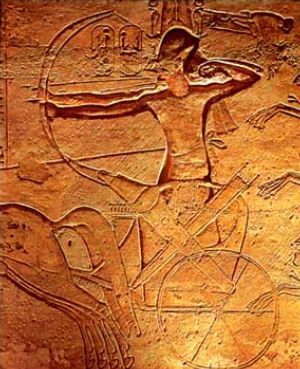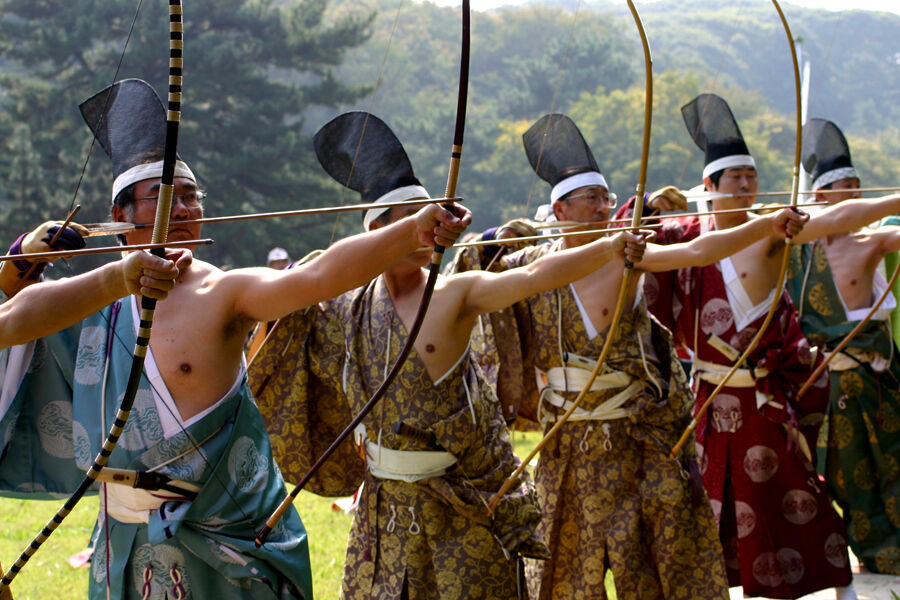
Archery, an ancient sport that has captivated people for centuries, has a rich and fascinating history. From its early origins as a means of survival and warfare to its evolution into a beloved recreational activity, archery has left an indelible mark on human civilization. Throughout the ages, different cultures around the world have embraced archery, each contributing their unique techniques and styles. Join us as we embark on a journey through time, unraveling the secrets and stories behind the history of archery.
Prehistoric Origins of Archery
Early Evidence of Archery
Archery, the ancient art of shooting arrows using a bow, has a rich and fascinating history that dates back to prehistoric times. The first evidence of archery can be traced back to the late Paleolithic era, around 10,000 BC. Archaeologists have discovered stone arrowheads and cave drawings depicting archers in various parts of the world, indicating that early humans were already practicing this skill thousands of years ago.
Bow and Arrow Developments
As civilizations began to develop, so did the technology and design of bows and arrows. In the Mesolithic period, around 8,000 to 6,000 BC, the bow and arrow started to evolve from simple wooden implements to more sophisticated tools. The introduction of composite bows, made from layered materials such as wood, sinew, and horn, greatly increased the range and power of arrows. This advancement revolutionized archery and allowed for more accurate and effective shooting.
Archery in Ancient Civilizations
Archery played a significant role in the daily lives of ancient civilizations. From Egypt to China, Greece to Japan, archery became not only a practical skill for warfare and hunting but also a symbol of status and power. Let’s explore the role of archery in some of these ancient cultures.
Archery in Ancient Egypt
Archery in Warfare
In Ancient Egypt, archery was utilized in both warfare and hunting. The Egyptian military made extensive use of archers, who played a crucial role in battles. Skilled archers were highly valued for their ability to rain down arrows upon their enemies from a distance. The Pharaohs recognized the importance of archery in warfare and maintained well-trained archer units to defend and expand their empire.
Archery in Hunting
Archery was also a popular activity for hunting in Ancient Egypt. The abundance of wildlife along the Nile River provided ample opportunities for the Egyptian elite to test their archery skills while pursuing game. Hunting scenes were often depicted on tomb murals, illustrating the significance of this activity in Egyptian society.
Archery as a Royal Skill
Archery was not only practiced by soldiers and hunters in Ancient Egypt but was also considered a royal skill. Pharaohs and noble figures were often depicted engaging in archery, highlighting their status and demonstrating their prowess with a bow and arrow. To be skilled in archery was to be associated with the divine, as it was believed that archery was a gift from the gods.

Archery in Ancient China
The Development of Archery
Ancient China has a long and storied history with archery. The Chinese are credited with many advancements in archery equipment, including the invention of the crossbow. The development of archery in China was closely tied to the military and warfare, as archers played a vital role in battles and conquests.
Archery in Military Tactics
Archery was a cornerstone of Chinese military tactics, and skilled archers played a crucial role in warfare. The Chinese military developed formations and strategies that maximized the effectiveness of their archers. From using shield formations to protect archers to coordinating synchronized volleys of arrows, archery tactics were honed to perfection.
Archery in Competitive Sports
In addition to its military applications, archery also became a popular sport in ancient China. Archery contests were held during festivals and special occasions, and talented archers competed to display their skills. These competitions helped to refine and elevate archery techniques, and archers were often regarded as elite athletes in ancient Chinese society.
Archery in Ancient Greece
Archery in Mythology and Legends
Archery played a prominent role in Greek mythology and legends. The most famous Greek archer is arguably Heracles (Hercules), who was known for his exceptional archery skills. Greek mythology is filled with tales of heroes and gods wielding bows and arrows, emphasizing the mythological significance of archery in Greek culture.
Archery in the Olympic Games
The ancient Olympic Games, held in Greece, included archery as one of the sporting events. Archery contests tested the accuracy and skill of the participants, and the winners were revered for their prowess. The Olympic Games provided a platform for archers to showcase their abilities, and winning an archery competition was a great honor.
Archery as a Military Skill
In ancient Greece, archery was an integral part of military training. The bow and arrow were recognized as essential weapons in warfare, and Greek soldiers were expected to be proficient archers. To ensure the effectiveness of their military forces, Greek city-states placed a strong emphasis on archery training and education.

Medieval Archery
The Longbow Revolution
The medieval period witnessed a significant revolution in archery with the introduction of the longbow. The longbow was a powerful weapon capable of firing arrows with remarkable speed and accuracy over long distances. Its use by English archers during the Hundred Years’ War had a profound impact on warfare, often turning the tide of battles.
Archery in Medieval Warfare
Archers played a crucial role in medieval warfare, proving themselves as formidable forces. Skilled archers could unleash a hail of arrows, creating chaos and disruption among enemy ranks. In combination with infantry and cavalry, archers became an indispensable component of medieval armies.
Archery Guilds and Training
The popularity and importance of archery in medieval society led to the establishment of archery guilds and schools dedicated to training archers. These institutions provided structured training and education in archery techniques and tactics. Archers were highly revered and respected, and their skills were continually honed to maintain their effectiveness in battle.
Archery in Japan
Kyudo: The Way of the Bow
In Japan, archery is known as Kyudo, which translates to “The Way of the Bow.” Kyudo is not just a martial art but a discipline that encompasses physical, mental, and spiritual aspects. It emphasizes the development of perfect form and inner focus, making it a way of self-improvement and spiritual growth.
Samurai and Archery
Archery played a vital role in the life of the samurai, the warrior class of feudal Japan. Samurai warriors were trained extensively in archery from a young age. The bow and arrow were considered important weapons of the samurai, and their skills with the bow were a demonstration of their honor, discipline, and dedication to their lord.
Archery in Traditional Japanese Culture
Archery is deeply ingrained in traditional Japanese culture. It is often associated with festivals and ceremonies, where archers perform ceremonial shooting to honor deities or commemorate significant events. Archery in Japan reflects a harmonious blend of art, spirituality, and reverence for the ancient samurai tradition.

Archery in Native American Cultures
Native American Bows and Arrows
Archery played a vital role in the survival and culture of Native American tribes across North America. Native American bows and arrows were crafted using natural materials such as wood, sinew, and animal bones. Each tribe had its unique style of bow and arrow, reflecting their environment, resources, and hunting techniques.
Archery in Hunting and War
Native Americans relied on archery for both hunting for sustenance and engaging in warfare. Skilled archers were adept at stalking and taking down game, ensuring the survival of their tribes. In times of conflict, archers used their skills to defend their lands and tribes. Archery was a versatile and essential tool in Native American life.
Spiritual and Ritual Significance
Archery held deep spiritual and ritual significance in Native American cultures. The act of shooting arrows was often intertwined with expressions of gratitude, prayer, and connection to the natural world. Native American archers recognized the spiritual energy of the bow and arrow, using them as conduits for communicating with higher powers.
Archery in Modern Times
Archery as a Recreational Sport
In modern times, archery has become a popular recreational sport enjoyed by people of all ages and backgrounds. Archery ranges and clubs provide opportunities for individuals to practice and compete in a safe and controlled environment. Archery offers a unique combination of physical exertion, mental focus, and stress relief, making it a rewarding and enjoyable activity.
Archery in the Olympic Games
Archery has been a part of the Olympic Games since ancient times. It was reintroduced to the modern Olympic Games in 1900 and has been a staple ever since. Olympic archery competitions showcase the world’s best archers, who compete for gold, silver, and bronze medals. The inclusion of archery in the Olympics has helped elevate the sport’s popularity and visibility on a global scale.
Traditional Archery Revival
Alongside modern archery, there has been a revival of traditional archery practices. Many individuals are drawn to the simplicity and historical roots of traditional archery. Traditional archers embrace ancient techniques, using handmade bows and arrows as they delve into the artistry and traditions of archery from different cultures and time periods.

Technological Advances in Archery
Compound Bows and Crossbows
Technological advancements have greatly influenced the sport of archery. Compound bows and crossbows, invented in the 20th century, have revolutionized archery by introducing innovative designs and mechanisms. These bows utilize pulleys and cables to increase power and improve accuracy, making them popular choices for recreational and competitive archers.
Improvements in Bow Materials
Traditional wooden bows have been supplemented with modern materials like fiberglass, carbon fiber, and aluminum alloys. These materials offer increased durability, flexibility, and consistency in performance. The use of advanced materials has allowed archers to push the boundaries of their skill and achieve greater accuracy and precision in their shots.
Precision and Accuracy Innovations
Advances in archery technology have also led to improved aiming and sighting systems. Archers now have access to various accessories such as sights, stabilizers, and release aids, which aid in precision and consistency. These innovations have made archery more accessible to beginners while providing experienced archers with tools to refine their shooting techniques.
Archery in Popular Culture
Archery in Movies and TV Shows
Archery has captured the imagination of popular culture and has found its way into countless movies, TV shows, and books. Iconic characters like Robin Hood, Legolas from “The Lord of the Rings,” and Katniss Everdeen from “The Hunger Games” have become synonymous with archery. The depiction of archery in popular media has helped create a renewed interest in the sport and has inspired a new generation of archers.
Archery as a Characteristic Skill
Archery is often portrayed as a characteristic skill for fictional characters. It represents precision, agility, and extraordinary marksmanship. From the skilled archer characters of Legolas in “The Lord of the Rings” to Hawkeye in Marvel’s “Avengers,” archery has become the defining trait of many beloved heroes and heroines.
The Rise of Archery in Popularity
In recent years, archery has experienced a surge in popularity as a recreational and competitive sport. The accessibility of archery ranges, the promotion of archery in schools and communities, and the increased exposure through media have all contributed to its growing fanbase. Archery’s blend of athleticism, focus, and historical roots appeals to many individuals seeking a challenging and rewarding pursuit.
In conclusion, the history of archery is a testament to its enduring appeal and significance. From its prehistoric origins to its prominence in ancient civilizations, archery has played diverse roles as a tool for survival, a symbol of power, and a revered skill. Through technological advancements and its presence in popular culture, archery continues to capture the hearts and imaginations of people around the world, ensuring its place as a timeless and cherished pursuit. So, pick up a bow, take aim, and experience firsthand the ancient art of archery that has been passed down through the ages. Happy shooting!
